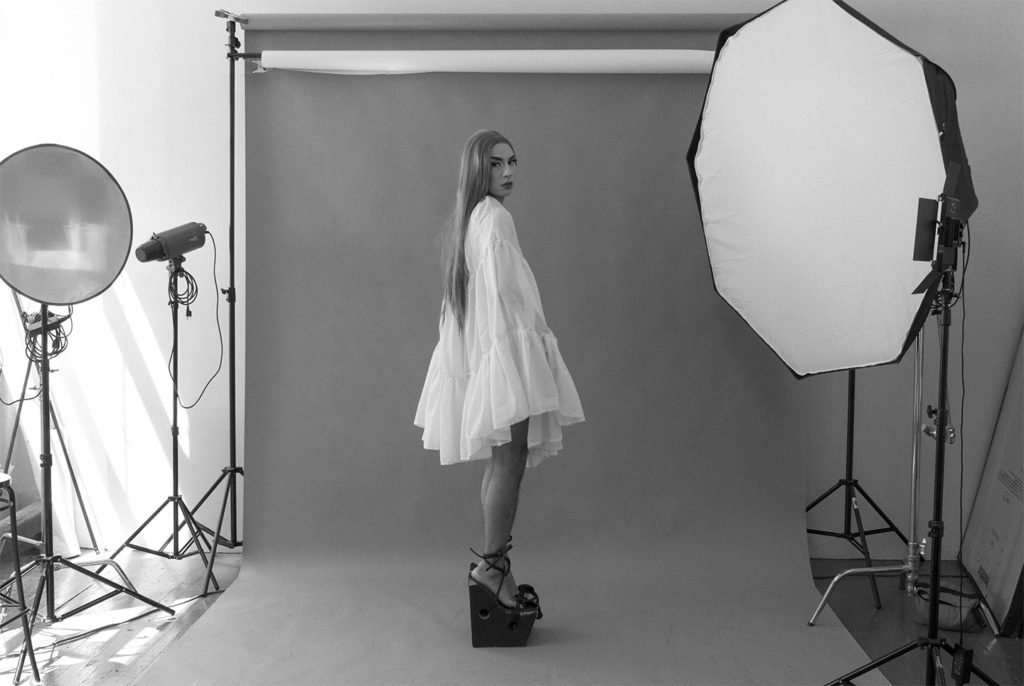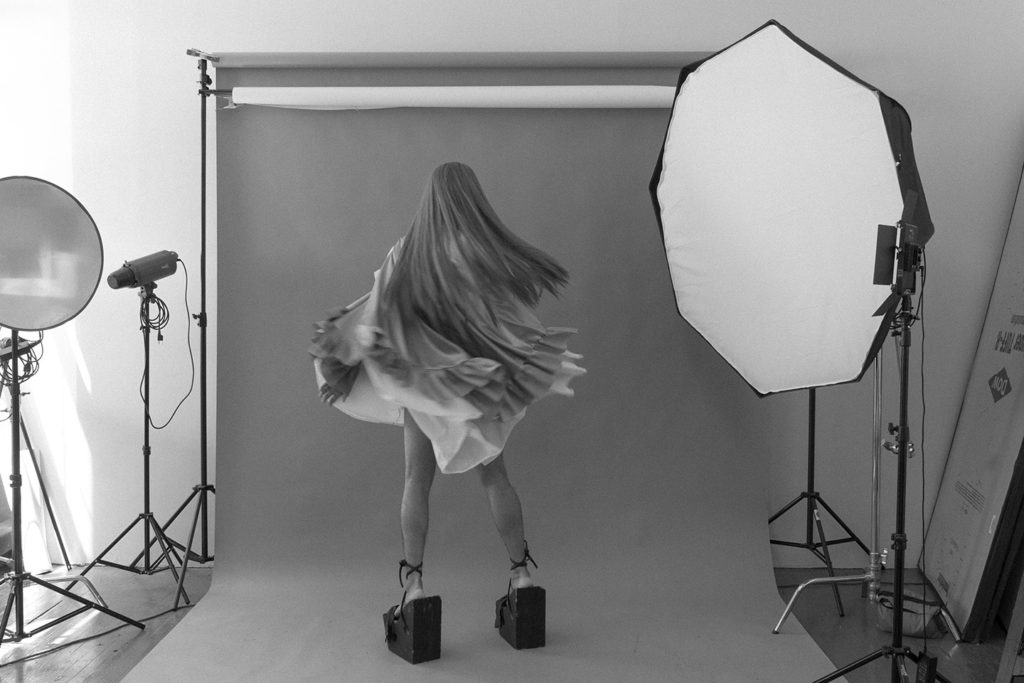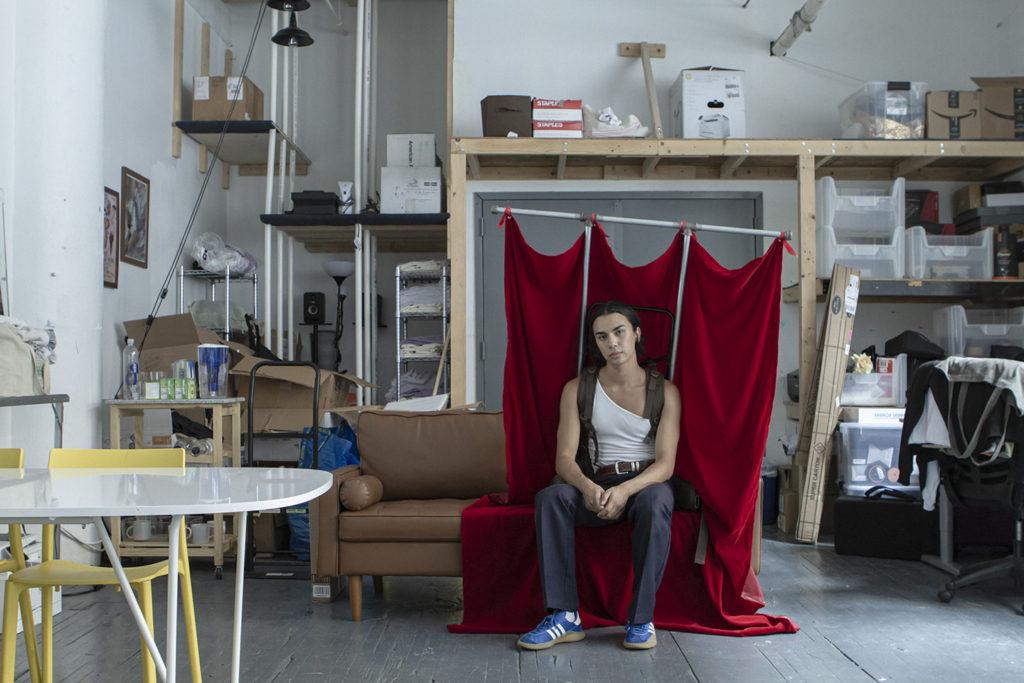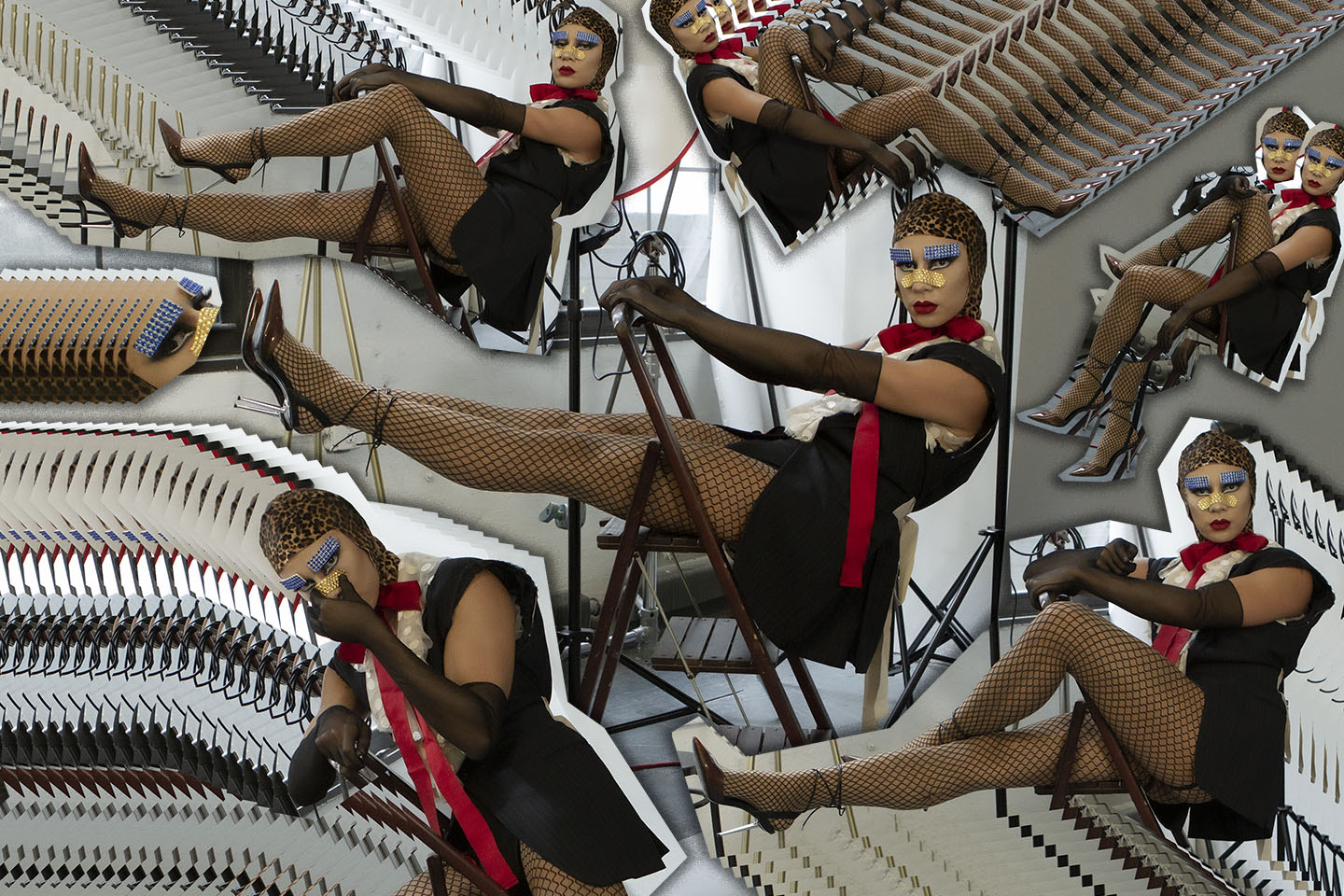Now an established figure in Brooklyn’s drag scene, Hawai‘i’s Alika Hall serves up presence, burlesque, racy reveals, and strip tease as Panthera Lush.
Text by Calla Camero
Images by Alika Hall
It’s a late May afternoon in Honolulu and Panthera Lush is putting the finishing touches on a performance look: a lauhala-inspired bustier top with drapes of antique cloth napkins fashioned into an ivory skirt. The humid heat is slowly baking the drag performer’s freshly contoured cheeks and sending beads of sweat down rouge-stained lips as the quarantine dance party suitably titled Qwarant Qween introduces the Hilo-born, Brooklyn-based queen for a performance in sheer isolation.
Panthera Lush is the drag alter ego of 27-year-old designer and visual artist Alika Hall, who discovered drag in 2011 as a form of self-expression, confidence, and freedom that began translating into his life off the stage as well. Hall graduated from Parsons School of Design in 2014 with a fashion degree and has parlayed that knowledge in the subsequent years to conceive and create the transformative vision that is Panthera today.
Now an established queen in Brooklyn’s vibrant drag scene, Panthera’s stage presence incorporates burlesque, racy reveals, and strip tease, often accompanied by the performer’s quintessential look: the corset. “As a designer I consider myself my own model, and Panthera is the creation of what I want to see,” he explains.
Panthera brought that same tantalizing energy to the online “stage” for the Qwarant Qween dance party, hosted by the queer Asian party collective Bubble_T to commemorate Asian American and Pacific Islander Heritage Month, which celebrates queer and trans performance artists of color and connects the community amidst the global Covid-19 pandemic.
In a testament to our shifting year, I caught up with Alika on multiple occasions—in Hawai‘i and New York, in person and by phone—all against the backdrop of turbulent current events. We chat about the intersection of BIPOC social movements, his local upbringing, and seeing every day as an opportunity for self-transformation.

How has quarantine been?
Quarantine came at a good time in the context of my drag. Starting in mid-January I was sort of taking a step back from performing and thinking, “OK, where do I want this to go?” I don’t want to just be someone who lip-syncs at a bar on the weekends. I want my projects to be more art centered, focused, and grander, or more purposeful.
You spend a lot of time in Honolulu, but you’re from Hilo, right?
Yeah, I was born there and my whole family is from Hilo, but I moved to O‘ahu when I was 2 years old, so I really grew up here. I consider myself from both places. My family roots are planted in Hilo and my personal roots in O‘ahu.
Where’d you go to school?
I went to Kamehameha for middle school, but halfway through 9th grade I told my dad I wanted to switch because I felt like I couldn’t really express myself there. I was also getting bullied, which I think was normal for any kid. Mostly I took issue with the way I had to dress, how I had to cut my hair. The way I presented myself was being completely regulated by the school. So, I ended up transferring to McKinley. I still got bullied there, but I didn’t care because I looked how I wanted to look. I was actually expressing myself, which made me feel more powerful.
Intent is the biggest thing in terms of my drag aesthetic. When you’re presenting a really creative part of yourself, you should be sending a strong message.
When did you create Panthera Lush?
Panthera was created around 2012 as an outlet of expression while I was in college. I started going out to club-kid parties in Manhattan when I was a freshman at Parsons. A lot of the fabulous characters you encounter at those parties have equally fabulous monikers, so I wanted one too.
Where does the name come from?
I’m a Scorpio, almost to a fault. I was doing some research on Scorpio spirit animals and panthers came up for their mysterious and seductive qualities. I added an “a” to it because I was inspired by the drag queen Lypsinka, who I first saw perform in the 1995 documentary Wigstock.
What’s your process for designing a performance?
My process starts from anywhere that inspires me. Sometimes it’s a particular look, or it can be a concept or a song. I like songs with heavy and powerful beats. I also like songs that build because it helps with storytelling for the performance to build and then climax. But I always focus on some element of surprise.
What do you mean by element of surprise?
Reveals. Sometimes I have a super long wig under my skull cap, so I’ll take that out and everyone gags for that. You’re transforming in front of your audience, by stripping or revealing a new look. Transformation is so inspiring to me.

The most important thing that I try to express through drag is the idea of self-creation. It’s the way you get dressed in the morning, the way you present yourself. It’s the little decisions you make to get yourself closer to your goals and what you want.
Alika Hall
How’d you get into burlesque?
I think it’s mostly the glamour of it that initially attracted me. It’s very thought out and choreographed, and the performers are done up and perfect. There’s something about strip tease that is very exciting, too. It’s something that will never fail to excite an audience. As the performer, it’s an adrenaline rush when you hear the audience cheering you on. The more you take off, the more they cheer.
When did you start designing?
I was drawing all throughout high school. At McKinley, I took an elective fashion class, and I designed some pieces for my senior-year talent show. But I didn’t really start designing for myself until 2011, right after my freshman year at Parsons, when I was home in Honolulu hanging out with my high school friends and going to Bar Seven. On Saturdays they had 18-and-over drag shows I would go to, and I designed myself a couple looks to go out in.
That’s actually what led me into drag in general. I met this local queen Marina Del Rey, who helped shape my drag persona. She’s the house mother to so many little queers in Hawai‘i, and she really takes them under her wing. She’s the one who taught me how to do more feminine, drag-based makeup techniques.
How did your design style change over time?
Going through school and learning more about construction really opened up the possibilities. The corseting and other designs I’m known for started when I was developing my senior thesis collection. Forcing myself to learn all those techniques for my collection left me with knowledge I still use in every one of my signature looks and designs. Also, now that I design shoes for a living, I’m starting to think of footwear as a huge focus in my drag and performance work.
How would you describe Panthera’s signature look?
Intent is the biggest thing in terms of my drag aesthetic. Panthera’s look can really vary, from a long, straight wig and girly dress to a skull cap and structured blazer. The range is wide, but it’s always purposeful. When you’re presenting a really creative part of yourself, you should be sending a strong message, and if not, then it’s fine to take a moment and sit with it more.
What do you think is Panthera’s message?
The most important thing that I try to express through drag is the idea of self-creation. In drag, it’s so on the nose because you’re creating a new person in yourself, but I like to push that message further and use drag to alert people to the fact that self-creation is what we do every day. It’s the way you get dressed in the morning, the way you present yourself. It’s the little decisions you make to get yourself closer to your goals and what you want.
How are you feeling about everything going on with the movement for Black Lives Matter?
I think it’s been really great to see people being more mindful of social issues and injustices and of the prejudices and privileges that exist in the world. Growing up in Hawai‘i, we have such an insular view of what is happening in the world. This movement has put all of that right in front of us, and I think it’s great that Hawai‘i people are speaking out about it.
How do you think the movement has affected Pride month?
This is the month that non-queer-identifying people really pay attention to queer issues, so using this time to amplify our voices about what still needs to be done is one of the most important things about Pride. I touched on this on my Instagram, where I talked about how we should be shifting the focus of Pride to highlight the social injustices experienced by the Black community, how we should work together to build them up and stand next to them in this fight.
The post went viral and there was some serious backlash. People took it completely out of context, accusing me of trying to silence queer people and cancel Pride. First of all, I’m not trying to silence queer people—I am queer. And I was like, OK, you kids think that Pride is embodied in makeup and a jockstrap? Or in some product? That’s not what Pride is at all. Pride cannot be taken away.
I’m really surprised it was taken that way. Feels like the opposite of the point you were trying to make.
Exactly. That’s why I felt comfortable writing what I wrote. I have so much pride and self-worth as a queer person that I know my voice can be used and heard to amplify a movement like Black Lives Matter, or any other movement for impoverished and oppressed people. To me it feels counterproductive to have a parade when others are still experiencing oppression. How can we celebrate equality when things are not equal?

In an ode to self-reflection, all wardrobe and props were pulled from Panthera’s closet of looks and past performances.
How has it felt being home in Hawai‘i during all of this?
Being here for the last two months has really opened my eyes to the fact that Hawai‘i seems to be in a renaissance of sorts. I think a lot of it has been sparked by the Maunakea protests and Kū Kia‘i Mauna. I see people being more culturally mindful, not only in terms of preserving the land, but the stories and the history of Hawai‘i and Hawaiian people, too.
Hawai‘i is the most unique place in that way.
It’s so unique. For me personally, my Hawaiian ancestry gives me a jumping-off point to create my own identity and infuse those things into my creative work. Rather than being an outsider in Western culture and feeling like I don’t fit into all these gender norms, I can go back to my roots. It gives me this natural, comfortable agency to be myself. Through home, I can create more of my identity the way I want to.
It’s been 10 years since you left Hawai‘i. Have you ever looked back?
I don’t see myself moving back for good any time soon, but it is really important for me to always have roots at home in Hawai’i because it is such a big part of who I am. Whether it’s going back every now and then and meeting with the creative people or the drag queens there, I’ll always want a connection to home.
This interview has been edited and condensed for clarity.

